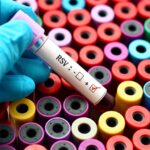What Is a Strep a Test?

Rapid antigen tests (Strep A/Beta test) and throat cultures are commonly used to diagnose throat infections caused by Group A beta-hemolytic streptococci (Group A Streptococcus). The rapid antigen test (Strep A) provides results in as little as 15 minutes, while the throat culture takes 18 to 24 hours to yield results. Throat culture is considered the gold standard for diagnosing throat infections caused by Group A Streptococcus. However, Strep A testing is widely used to initiate treatment more quickly. A positive Strep A test result is highly valuable. Nevertheless, it is possible to detect Group A Streptococcus in throat cultures even when the Strep A test comes back negative. Therefore, it is a common and reliable practice to take both tests simultaneously using dual swab sticks for throat cultures and test both together.
Why Is Group a Streptococcus Infection Important?
Group A streptococci can cause many infections that range from mild to severe, even fatal. Most importantly, these bacteria can lead to Acute Rheumatic Fever even after the initial infection resolves, potentially causing inflammatory diseases such as carditis and glomerulonephritis. Group A streptococci are significant human pathogens and cause over 600 million upper respiratory infections worldwide each year. Untreated or recurrent infections can lead to post-infection sequelae, such as rheumatic heart disease, which is a significant cause of death due to Group A streptococcus. Carrier status among children is prevalent; about 20% of asymptomatic school-age children have Group A streptococcus. Additionally, approximately 25% of asymptomatic household contacts of children with streptococcal pharyngitis are also carriers.
How Do Group a Streptococci Spread?
Group A streptococci typically live in the nose and throat. Infected individuals spread bacteria into the environment through talking, coughing, or sneezing, producing respiratory droplets that contain the bacteria. The ways Group A streptococci can spread include:
– Breathing in respiratory droplets that contain the bacteria,
– Touching any object that has these droplets and then touching the mouth or nose,
– Sharing utensils or glasses with someone carrying the bacteria,
Additionally, people can spread Group A streptococcal bacteria from infected skin lesions. Others may become ill if they touch these lesions or come into contact with fluids draining from the wounds.
How to Prevent Strep a Infection?
Individuals can become infected with Group A streptococcal bacteria multiple times throughout their lives. There is currently no vaccine to prevent Group A streptococcal infections. The focus is on three important goals for preventing these infections: limiting the spread of the bacteria, treating infected individuals, and providing prophylactic antibiotics to healthy individuals who have been in contact with an infected person when necessary. Daily hygiene practices play a crucial role in limiting the spread of the bacteria and preventing transmission. These practices include timely treatment and care for skin infections, having coughing and sneezing individuals cover their mouths and noses with tissues, thoroughly washing kitchen utensils used by patients such as plates, forks, spoons, and glasses, and frequent handwashing.









